Cagri Ozcinar
Spherical Vision Transformer for 360-degree Video Saliency Prediction
Aug 24, 2023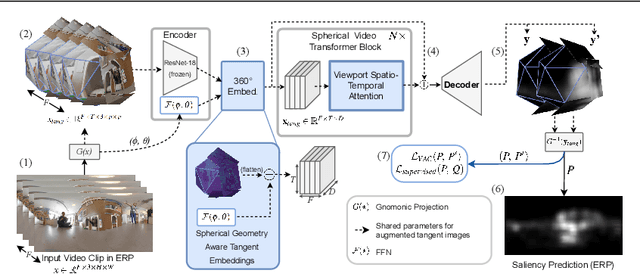

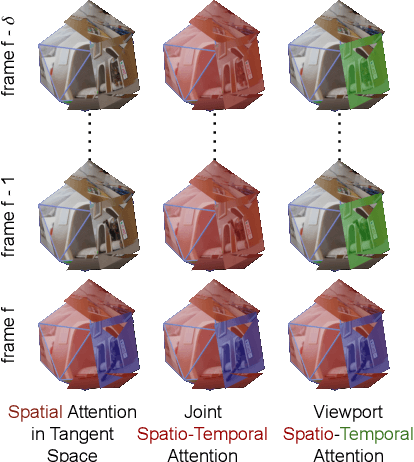

Abstract:The growing interest in omnidirectional videos (ODVs) that capture the full field-of-view (FOV) has gained 360-degree saliency prediction importance in computer vision. However, predicting where humans look in 360-degree scenes presents unique challenges, including spherical distortion, high resolution, and limited labelled data. We propose a novel vision-transformer-based model for omnidirectional videos named SalViT360 that leverages tangent image representations. We introduce a spherical geometry-aware spatiotemporal self-attention mechanism that is capable of effective omnidirectional video understanding. Furthermore, we present a consistency-based unsupervised regularization term for projection-based 360-degree dense-prediction models to reduce artefacts in the predictions that occur after inverse projection. Our approach is the first to employ tangent images for omnidirectional saliency prediction, and our experimental results on three ODV saliency datasets demonstrate its effectiveness compared to the state-of-the-art.
ST360IQ: No-Reference Omnidirectional Image Quality Assessment with Spherical Vision Transformers
Mar 13, 2023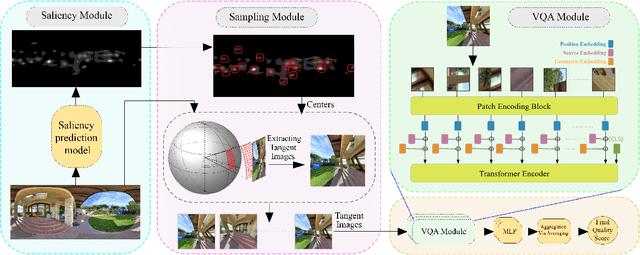
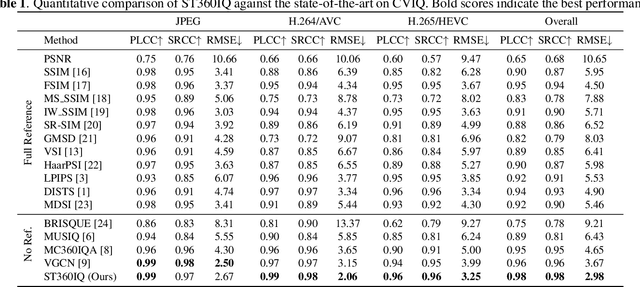
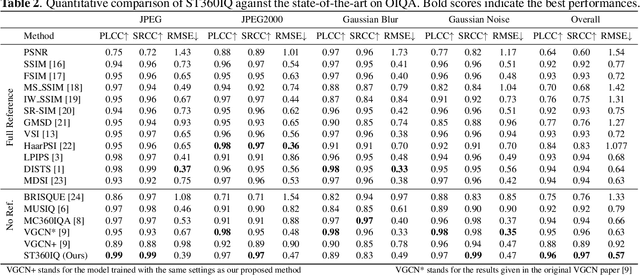

Abstract:Omnidirectional images, aka 360 images, can deliver immersive and interactive visual experiences. As their popularity has increased dramatically in recent years, evaluating the quality of 360 images has become a problem of interest since it provides insights for capturing, transmitting, and consuming this new media. However, directly adapting quality assessment methods proposed for standard natural images for omnidirectional data poses certain challenges. These models need to deal with very high-resolution data and implicit distortions due to the spherical form of the images. In this study, we present a method for no-reference 360 image quality assessment. Our proposed ST360IQ model extracts tangent viewports from the salient parts of the input omnidirectional image and employs a vision-transformers based module processing saliency selective patches/tokens that estimates a quality score from each viewport. Then, it aggregates these scores to give a final quality score. Our experiments on two benchmark datasets, namely OIQA and CVIQ datasets, demonstrate that as compared to the state-of-the-art, our approach predicts the quality of an omnidirectional image correlated with the human-perceived image quality. The code has been available on https://github.com/Nafiseh-Tofighi/ST360IQ
Ensemble approach for detection of depression using EEG features
Mar 07, 2021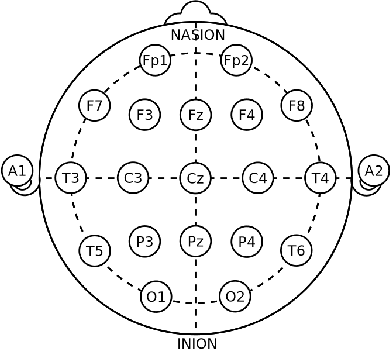
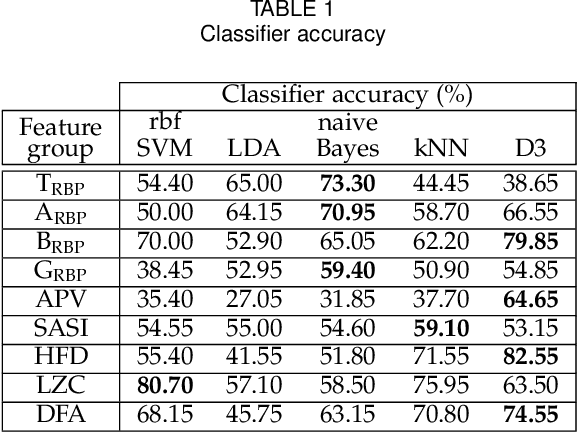
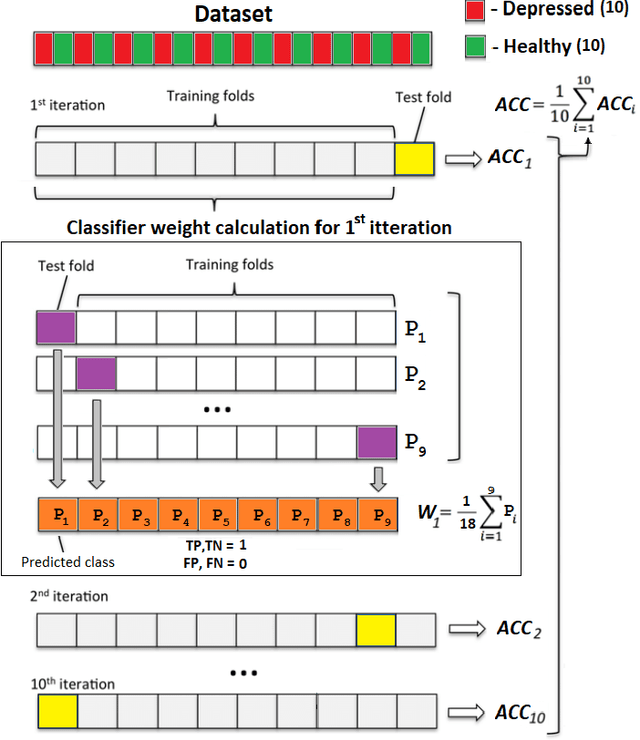
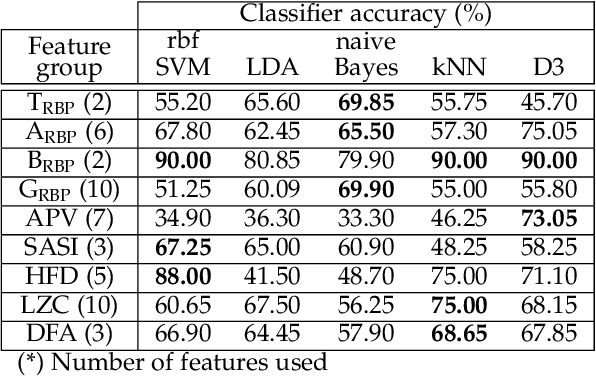
Abstract:Depression is a public health issue which severely affects one's well being and cause negative social and economic effect for society. To rise awareness of these problems, this publication aims to determine if long lasting effects of depression can be determined from electoencephalographic (EEG) signals. The article contains accuracy comparison for SVM, LDA, NB, kNN and D3 binary classifiers which were trained using linear (relative band powers, APV, SASI) and non-linear (HFD, LZC, DFA) EEG features. The age and gender matched dataset consisted of 10 healthy subjects and 10 subjects with depression diagnosis at some point in their lifetime. Several of the proposed feature selection and classifier combinations reached accuracy of 90% where all models where evaluated using 10-fold cross validation and averaged over 100 repetitions with random sample permutations.
Quality Assessment of Super-Resolved Omnidirectional Image Quality Using Tangential Views
Jan 25, 2021



Abstract:Omnidirectional images (ODIs), also known as 360-degree images, enable viewers to explore all directions of a given 360-degree scene from a fixed point. Designing an immersive imaging system with ODI is challenging as such systems require very large resolution coverage of the entire 360 viewing space to provide an enhanced quality of experience (QoE). Despite remarkable progress on single image super-resolution (SISR) methods with deep-learning techniques, no study for quality assessments of super-resolved ODIs exists to analyze the quality of such SISR techniques. This paper proposes an objective, full-reference quality assessment framework which studies quality measurement for ODIs generated by GAN-based and CNN-based SISR methods. The quality assessment framework offers to utilize tangential views to cope with the spherical nature of a given ODIs. The generated tangential views are distortion-free and can be efficiently scaled to high-resolution spherical data for SISR quality measurement. We extensively evaluate two state-of-the-art SISR methods using widely used full-reference SISR quality metrics adapted to our designed framework. In addition, our study reveals that most objective metric show high performance over CNN based SISR, while subjective tests favors GAN-based architectures.
A Study on Visual Perception of Light Field Content
Aug 07, 2020
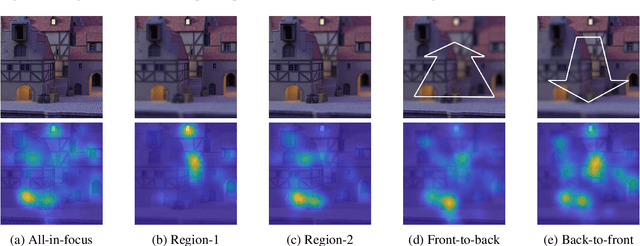

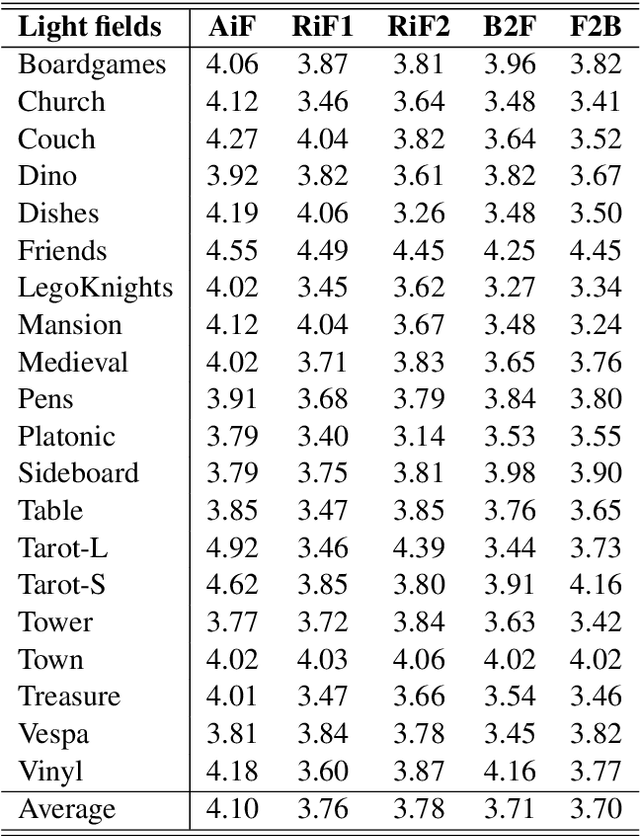
Abstract:The effective design of visual computing systems depends heavily on the anticipation of visual attention, or saliency. While visual attention is well investigated for conventional 2D images and video, it is nevertheless a very active research area for emerging immersive media. In particular, visual attention of light fields (light rays of a scene captured by a grid of cameras or micro lenses) has only recently become a focus of research. As they may be rendered and consumed in various ways, a primary challenge that arises is the definition of what visual perception of light field content should be. In this work, we present a visual attention study on light field content. We conducted perception experiments displaying them to users in various ways and collected corresponding visual attention data. Our analysis highlights characteristics of user behaviour in light field imaging applications. The light field data set and attention data are provided with this paper.
Sub-Pixel Back-Projection Network For Lightweight Single Image Super-Resolution
Aug 03, 2020



Abstract:Convolutional neural network (CNN)-based methods have achieved great success for single-image superresolution (SISR). However, most models attempt to improve reconstruction accuracy while increasing the requirement of number of model parameters. To tackle this problem, in this paper, we study reducing the number of parameters and computational cost of CNN-based SISR methods while maintaining the accuracy of super-resolution reconstruction performance. To this end, we introduce a novel network architecture for SISR, which strikes a good trade-off between reconstruction quality and low computational complexity. Specifically, we propose an iterative back-projection architecture using sub-pixel convolution instead of deconvolution layers. We evaluate the performance of computational and reconstruction accuracy for our proposed model with extensive quantitative and qualitative evaluations. Experimental results reveal that our proposed method uses fewer parameters and reduces the computational cost while maintaining reconstruction accuracy against state-of-the-art SISR methods over well-known four SR benchmark datasets. Code is available at "https://github.com/supratikbanerjee/SubPixel-BackProjection_SuperResolution".
Towards Generating Ambisonics Using Audio-Visual Cue for Virtual Reality
Aug 16, 2019



Abstract:Ambisonics i.e., a full-sphere surround sound, is quintessential with 360-degree visual content to provide a realistic virtual reality (VR) experience. While 360-degree visual content capture gained a tremendous boost recently, the estimation of corresponding spatial sound is still challenging due to the required sound-field microphones or information about the sound-source locations. In this paper, we introduce a novel problem of generating Ambisonics in 360-degree videos using the audio-visual cue. With this aim, firstly, a novel 360-degree audio-visual video dataset of 265 videos is introduced with annotated sound-source locations. Secondly, a pipeline is designed for an automatic Ambisonic estimation problem. Benefiting from the deep learning-based audio-visual feature-embedding and prediction modules, our pipeline estimates the 3D sound-source locations and further use such locations to encode to the B-format. To benchmark our dataset and pipeline, we additionally propose evaluation criteria to investigate the performance using different 360-degree input representations. Our results demonstrate the efficacy of the proposed pipeline and open up a new area of research in 360-degree audio-visual analysis for future investigations.
Super-resolution of Omnidirectional Images Using Adversarial Learning
Aug 12, 2019



Abstract:An omnidirectional image (ODI) enables viewers to look in every direction from a fixed point through a head-mounted display providing an immersive experience compared to that of a standard image. Designing immersive virtual reality systems with ODIs is challenging as they require high resolution content. In this paper, we study super-resolution for ODIs and propose an improved generative adversarial network based model which is optimized to handle the artifacts obtained in the spherical observational space. Specifically, we propose to use a fast PatchGAN discriminator, as it needs fewer parameters and improves the super-resolution at a fine scale. We also explore the generative models with adversarial learning by introducing a spherical-content specific loss function, called 360-SS. To train and test the performance of our proposed model we prepare a dataset of 4500 ODIs. Our results demonstrate the efficacy of the proposed method and identify new challenges in ODI super-resolution for future investigations.
On the effect of age perception biases for real age regression
Feb 20, 2019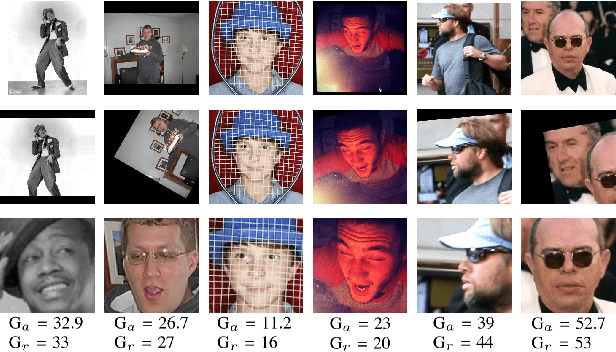
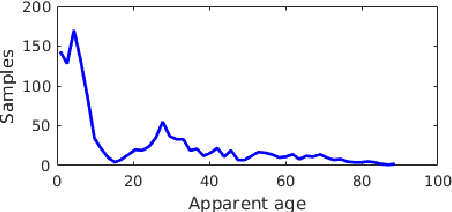
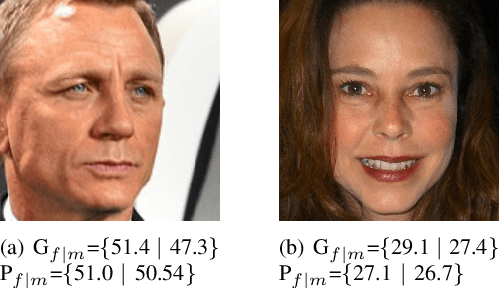

Abstract:Automatic age estimation from facial images represents an important task in computer vision. This paper analyses the effect of gender, age, ethnic, makeup and expression attributes of faces as sources of bias to improve deep apparent age prediction. Following recent works where it is shown that apparent age labels benefit real age estimation, rather than direct real to real age regression, our main contribution is the integration, in an end-to-end architecture, of face attributes for apparent age prediction with an additional loss for real age regression. Experimental results on the APPA-REAL dataset indicate the proposed network successfully take advantage of the adopted attributes to improve both apparent and real age estimation. Our model outperformed a state-of-the-art architecture proposed to separately address apparent and real age regression. Finally, we present preliminary results and discussion of a proof of concept application using the proposed model to regress the apparent age of an individual based on the gender of an external observer.
3D Scanning: A Comprehensive Survey
Jan 24, 2018
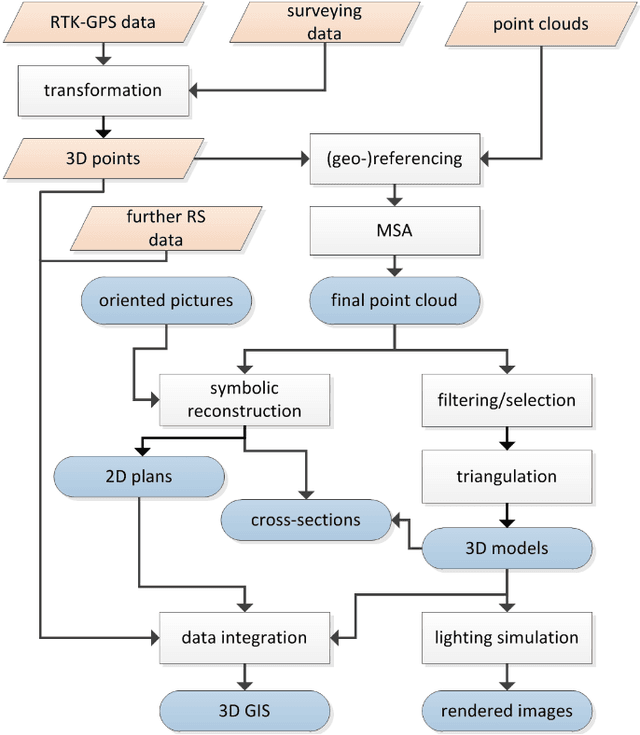
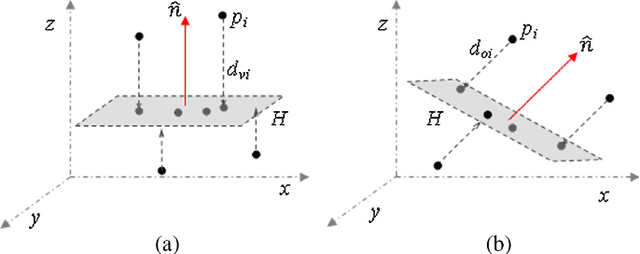

Abstract:This paper provides an overview of 3D scanning methodologies and technologies proposed in the existing scientific and industrial literature. Throughout the paper, various types of the related techniques are reviewed, which consist, mainly, of close-range, aerial, structure-from-motion and terrestrial photogrammetry, and mobile, terrestrial and airborne laser scanning, as well as time-of-flight, structured-light and phase-comparison methods, along with comparative and combinational studies, the latter being intended to help make a clearer distinction on the relevance and reliability of the possible choices. Moreover, outlier detection and surface fitting procedures are discussed concisely, which are necessary post-processing stages.
 Add to Chrome
Add to Chrome Add to Firefox
Add to Firefox Add to Edge
Add to Edge